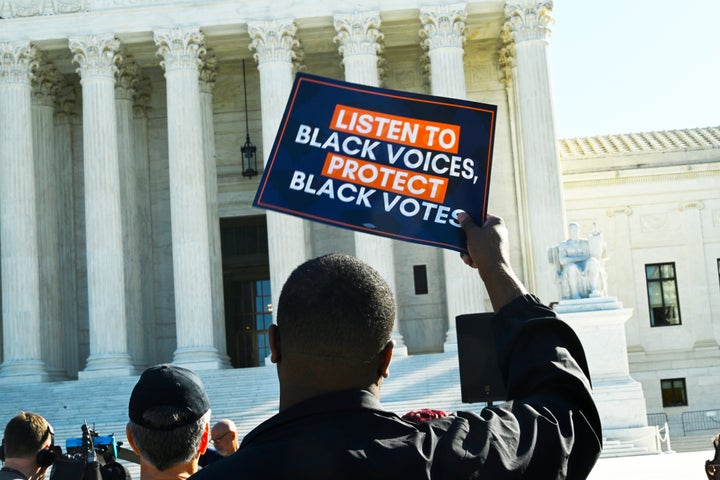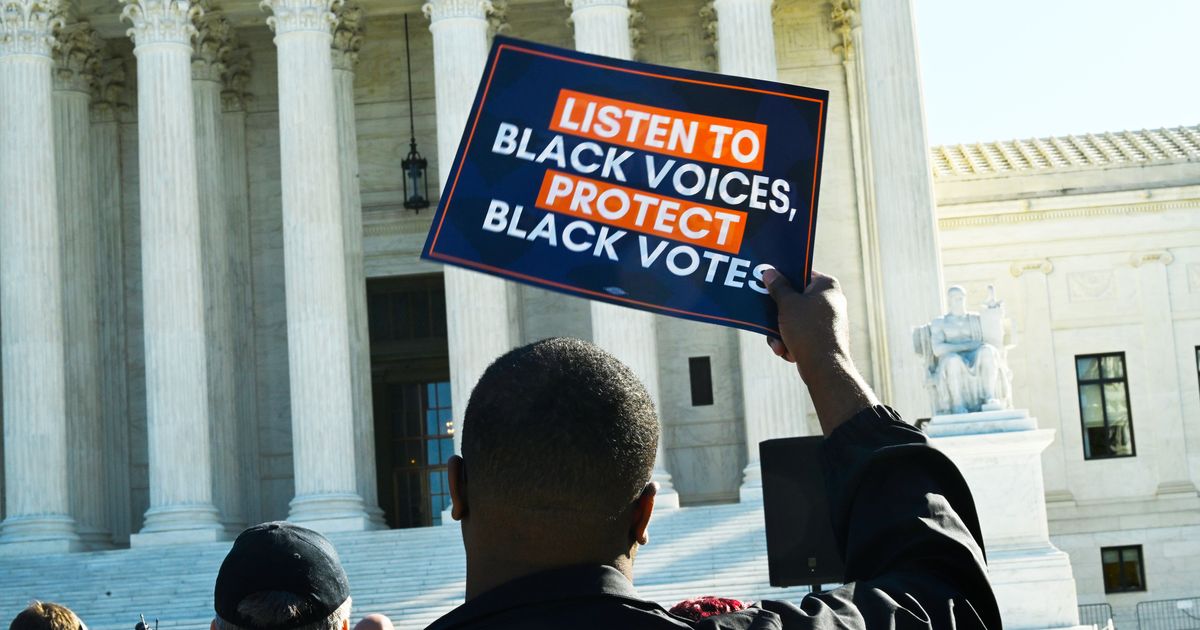The Supreme Court overturned a lower court decision that found that South Carolina Republicans improperly used race to gerrymander the state’s 1st Congressional District in a Thursday decision.
A three-judge federal district court panel ruled in 2023 that the lines drawn in the state’s 1st Congressional District were an illegal racial gerrymander. The legislature’s movement of Black voters out and white voters in amounted to a “bleaching” of the district, the district court said in a ruling that Republicans in the state legislature later appealed to the Supreme Court.
But the conservative majority on the Supreme Court disagreed in a 6-3 opinion that reversed and remanded the lower court decision. The majority opinion, written by Justice Samuel Alito, argued that the complaint brought by the South Carolina State Conference of the NAACP relied on “circumstantial” evidence that the state legislature used race when it drew the 1st District’s lines. Instead, the majority sided with South Carolina’s argument that the state’s movement of Black voters in and white voters out of the district was merely a side effect of their attempt at partisan gerrymandering.
“A circumstantial-evidence-only case is especially difficult when the State raises a partisan-gerrymandering defense,” Alito wrote in the opinion, noting that the majority of Black voters in South Carolina voted for the Democratic presidential candidate in 2020. “When partisanship and race correlate, it naturally follows that a map that has been gerrymandered to achieve a partisan end can look very similar to a racially gerrymandered map.”
Justice Clarence Thomas filed a concurring opinion, while the three liberal justices, Elena Kagan, Sonia Sotomayor and Ketanji Brown Jackson, joined in a dissent.

Shannon Finney via Getty Images
The decision casts a bright light on the difficulties in determining when a state, particularly one like South Carolina that has a Black population twice the national average and presents a high degree of racial polarization with most Black voters and white voters supporting different parties, uses race or partisanship to redraw district lines.
And since the Supreme Court ruled in 2019 that federal courts cannot adjudicate claims of partisan gerrymandering, as the Constitution has nothing to say about it, states simply need to show that they only relied on partisan information, like party registration, when engaging in redistricting.
The conservative justices were not convinced by the district court’s reliance on expert analysis showing that South Carolina could not have moved the exact number of Black voters out of the district it needed to in order to achieve the desired GOP balance without relying on race.
″[N]o direct evidence supports the District Court’s finding that race predominated in the design of District 1 in the Enacted Plan. The circumstantial evidence falls far short of showing that race, not partisan preferences, drove the districting process, and none of the expert reports offered by the Challengers provides any significant support for their position,” the majority opined.
Thomas’ concurrence goes further, questioning what is even appropriate for the Supreme Court to weigh in on.
“In my view, the Court has no power to decide these types of claims. Drawing political districts is a task for politicians, not federal judges. There are no judicially manageable standards for resolving claims about districting, and, regardless, the Constitution commits those issues exclusively to the political branches. … It behooves us to abandon our misguided efforts and leave districting to politicians,” Thomas wrote.
In a pointed dissent, however, Kagan and the other liberal justices suggest that in interpreting the evidence of the case, “the majority goes seriously wrong.”
″[T]he Challengers introduced more than enough evidence of racial gerrymandering to support the District Court’s judgment. The majority’s attempt to explain its contrary result fails at every turn,” Kagan wrote, accusing the majority of picking and choosing evidence and inverting the burden of proof.
“In every way, the majority today stacks the deck against the Challengers. They must lose, the majority says, because the State had a “possible” story to tell about not considering race—even if the opposite story was the more credible,” she added. “When racial classifications in voting are at issue, the majority says, every doubt must be resolved in favor of the State, lest (heaven forfend) it be ‘accus[ed]’ of ‘offensive and demeaning’ conduct.”
Prior to redistricting in 2021, the 1st District featured a much closer partisan balance than it does now, with voters choosing Donald Trump over Joe Biden by just six percentage points in 2020. Democrat Joe Cunningham won the district by 4,000 votes in 2018 and then lost to current GOP Rep. Nancy Mace by fewer than 6,000 votes in 2020. Mace walked to an easy 14-point win in 2022 following the redistricting that exchanged Black voters for white voters in the district.
The Supreme Court’s decision would not have mattered for the 2024 election, however, as the district court ruled in March that the state could go forward with the challenged map while it waited on the high court’s ruling.






